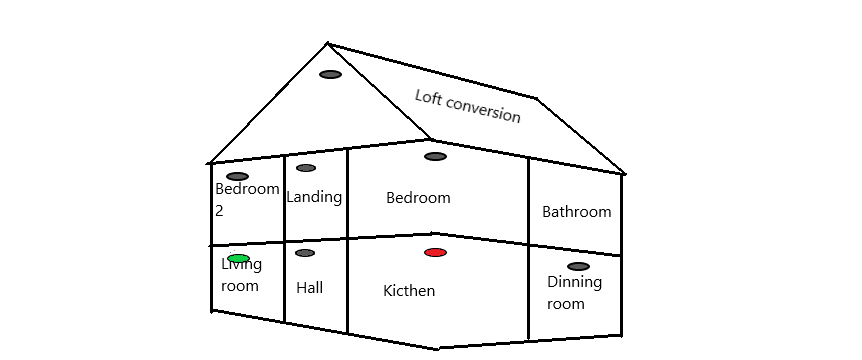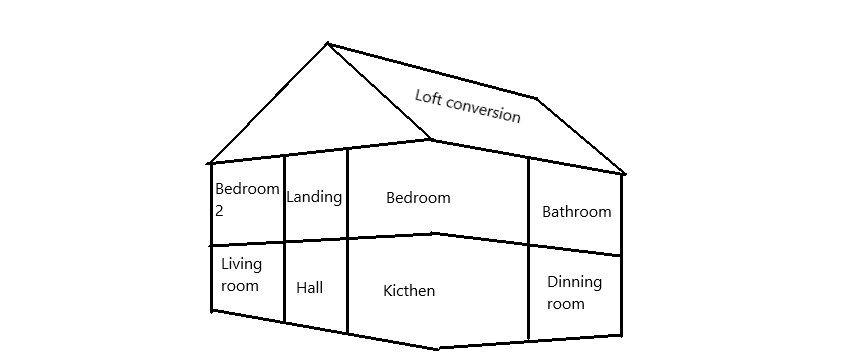BS 5839-6:2019
This article is intended to serve as a reference for BS 5839 Part 6: 2019 and should not be used in place of reading the Code of Practice. Instead, it’s intended to help fire alarm installers understand the consequences and recommendations of BS 5839 Part 6, as well as guide how to design, install, commission, and maintain a fire detection system that complies with the British standards, with a focus on the BS5839 Part 6:2019.
BS5839 Part 6
With the possible exception of some houses that are converted into hostel-type accommodation and sheltered housing schemes, the recommendations of BS 5839-6 apply to any kind of fire detection installed in any premises that would be represented as a house or dwelling in common parlance (rather than a strictly legal context).
It refers to architects, construction professionals, installers, and implementing authorities in domestic premises and HMO (House of Multiple Occupancy), and was recently amended by the British Standards Institution to ensure constant enforcement when specifying, installing, and maintaining fire detection systems in domestic properties.
Following are a few of the amendments made to BS5839 Part 6:
- Grade B and Grade E have been removed and Grade D and Grade F have been split into Grade D1 / Grade D2 and Grade F1 / Grade F2 respectively.
- Grade A: Separate alarms, sounders, and central control and indicating devices, all with a backup power supply that meets British Standards BS EN 54.
- Grade C: a series of fire detectors and alarm sounders (which can be combined to form smoke alarms) connected to a standard power supply that includes both the mains and a backup power supply, as well as central control equipment.
- Grade D1: a device consisting of one or more mains-powered detectors, each with a tamper-proof standby supply made up of a battery or batteries.
- Grade D2: a collection of one or more mains-powered detectors with a built-in standby supply consisting of a user-replaceable battery or batteries.
- Grade F1: a tamper-proof primary battery or batteries power a device of one or more battery-powered detectors.
- Grade F2: a device consisting of one or more battery-driven detectors that are powered by a primary battery or batteries that can be replaced by the user.
System categories
Three system categories are mentioned in BS5839 Part 6 to define the level of security to be provided:
LD1 Maximum Protection:
This level provides the highest level of security for all occupants dwelling. The automatic detectors are installed in all circulation areas that are part of the premises’ escape routes, as well as all rooms and areas other than those with marginal sources of ignition, such as toilets, bathrooms and shower rooms.

LD2 Medium Protection:
A fire system that includes alarms in all circulation areas that are part of the premises’ escape routes, as well as all identified rooms or areas that pose a high fire risk to occupants, such as a heat alarm in every kitchen and a smoke alarm in any habitable space(s).

LD3 Low Protection:
A device that includes alarms in all circulation areas that are part of the premises’ escape routes. Both circulation spaces that are part of escape routes should have smoke alarms fitted, such as Hallway, Landing. This category only applies to owner-occupied bungalows, flats, single-story units or maisonettes with no floor level above 4.5m from ground level, or owner-occupied two-story houses.

Amendment BS 5839-6+A1:2020
The British Standards Institution (BSI) has just published an amendment to BS 5839-6+A1:2020 Fire Detection and Fire Alarm Systems for Buildings Part 6: Code of Practice for the Design, Installation, Commissioning and Maintenance of Fire Detection and Fire Alarm Systems in Domestic Premises.
BS 5839-6+A1:2020 Fire Detection and Fire Alarm Systems for Buildings Part 6 is a recently updated amendment to the Code of Practice. The amendment responds to recent research suggesting that some children might be unable to hear fire alarm tones while sleeping. It suggests that the householder should be warned that children could sleep through the alarm, and be given advice on how to prepare for the possibility of a fire.
A model acceptance certificate for Grade A systems, as well as a model design, implementation, and commissioning certificate for Grade C, Grade D, and Grade F systems, are included in the amendment.
Learn more by receiving a three-day Level 3 Award in Fire Alarm Installation. Click here
For further information, take a look at the BS 5839-6:2019+A1:2020 standard from the BSI Group website.

